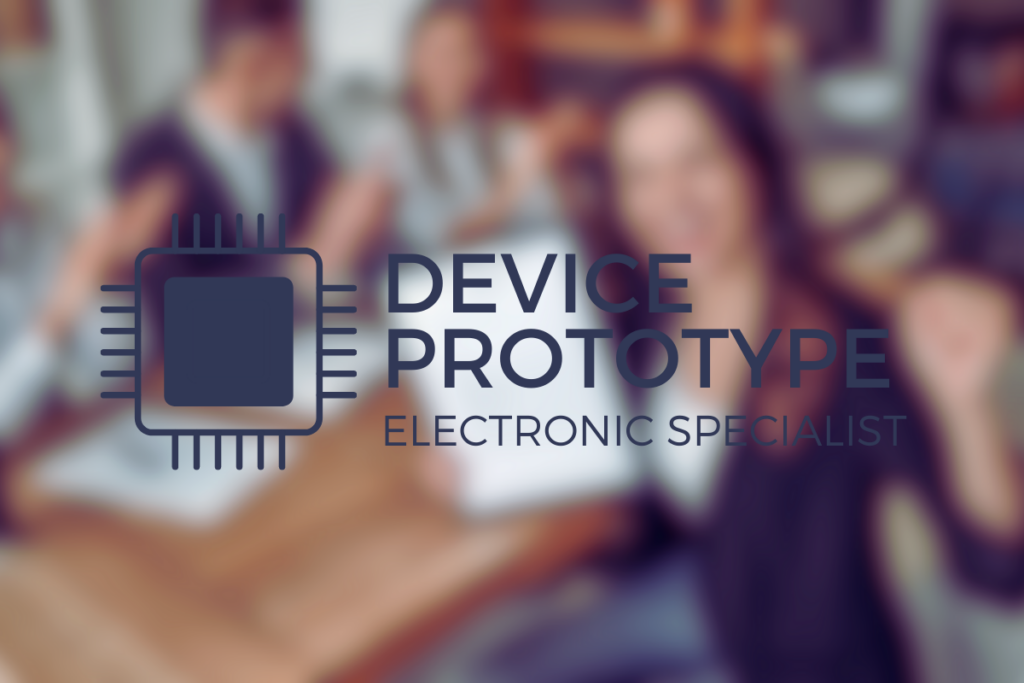Entrusting such an important field as research and development projects (R&D) to an external party may seem risky. The thing is, carrying them out within the structures of your own company may not even be feasible. Let’s review some of the solutions, financing and partnerships together.
What is Research and Development (R&D)?

Smart organizations that want to maintain growth and relevant products in the market invest in R&D. Numerous companies conduct R&D activities to innovate and improve their product lines and procedures. Experimenting with different approaches brings a lot of opportunities, the most important being that entirely new products and services can be developed. This is especially important in electronics - after all, we don't want our idea to come crashing down with a bang while still in the conceptual stage, when it turns out that we have simply overlooked some crucial details about virtually any component, module or functionality.
Implementation with the current state of technology may simply be impossible. The idea is great, but the execution is poor, and the testing phase to indicate whether something is going to work as expected hasn’t even started. This is a common story, although there are many shades of it. Research and development is about pioneering, innovative solutions, and certainly ones that are worth boasting about not only in the world of electronics, automation and robotics. The end goal is always innovation and profitability of practical solutions. More and more often we encounter R&D acronyms and this general trend looks great.
Conducting R&D and market research on your own - don't confuse one with the other

Of course you can do your own research. Create a survey for your clients. Of course, it will be difficult to assess their responsiveness or the ratio of e-mails opened and read to e-mails sent, but that's a separate issue. Are you curious about the prospects of a product or service you want to offer? Take advantage of Google search and see what's available on the market. You can address the same questions to your employees - feedback interviews conducted in this way are increasingly being implemented by companies. There are also plenty of tools, such as those offered by the Google suite, that can help with this.
The above examples are viable options that do not require an outside research firm, but do not apply to R&D projects. Research with professional marketing support is not the same as extensive technical and scientific projects with practical relevance. Consideration and basic market research is often confused with what R&D encompasses - it is about improving processes and physical solutions in the context of technology, not necessarily in the context of operability. Your device looks great, but can you develop a new type of battery specifically for it? Some entities probably can, but many others can't afford it due to a lack of knowledge in this area, a shortage of specialists on staff or the need to divide resources. This one, on the other hand, is bound to bring significant costs - and costs completely unforeseen during the planning phase. The solution is to hire DevicePrototype professional team, whose experience allows full control over all processes.
Research and Development Project - what is it and how does it proceed?

Most research and development projects take place in phases. At first there’s research phase. Team has to formulate the problem, experiment with new approaches and test the feasibility of potential product ideas. A thesis emerges - just like in the scientific world, after all, we may even come to a real scientific breakthrough. Then comes the development phase, in which the team transforms the research results into a product or service.
Basic research aims to understand a specific issue and build something like a related body of knowledge. Sometimes the activities carried out in this way are not intended to lead to seeing ways to implement practical commercial applications at all. Research “being about” mistakes or about doubts come in handy as well, because it always yields valuable discoveries and allows the product to be improved. We’re not discussing humanities studies, so no one leaves them in this phase - there’s time for more detailed, applied research that focuses on specific commercial goals and procedures. Finally, there may be an implementation phase, when actual systems, methods, procedures, materials or equipment can be created.
Outsourcing your R&D project

There are many practical advantages when conducting an R&D project in partnership with another company. For starters: potential obstacles. It doesn't take much expertise to see that R&D is different from most operations that companies perform every day. R&D departments often perform activities without any expectation or clear goal of immediate profit. This is because they focus on the long-term profitability of the company.
Setting up an internal R&D team almost always consumes significant resources. The details of how much time and effort should be spent on sourcing, recruiting and hiring candidates or funding research activities can cause headaches. In most cases, it is not easy for organizations to estimate the return on R&D expenditures, and in most cases ideas fail at the start because of this. Hiring an external R&D team comes with a number of advantages.
Product Focus. R&D activities must focus on providing innovative technologies, methods and systems that will be used to develop new products. We are not creating science for archival purposes, and it doesn't matter how much time is spent on the project - maybe it will be a few months, or maybe a few years, but it should always produce results, i.e. concrete benefits. Outsourcing thus reduces the risk of project failure, because it is easier to control the work of the external R&D team.
Control of resources. A paradox? We mentioned above that we can control the external team and its resources in confidence and without fear... and it even often works out better than with our own staff. So not at all. A potential advantage of outsourcing R&D, for example, is the time-boxing not of activities, but of contracts. The strategy works well for predicting the cost of research projects where the results cannot necessarily be defined at the start. The organization conducts a thorough analysis of costs, benefits and risks. Partnership is planned collaboratively and without enigmas.
Access to talent. With R&D outsourcing, there is no need to invest in sourcing, retaining or retraining employees... or all of the above together. This difference is crucial for companies located in markets where finding highly skilled technical staff is a major problem. Organizations using outsourcing gain virtually immediate access to a team of experts experienced in R&D projects. The team is tight-knit, its members know each other and can work together for us - the structures are already in place and thus we skip half the length in the race for good R&D result.
Faster time-to-market. By outsourcing R&D, companies can get to work almost immediately. Recruiting employees and building an in-house R&D team is a long road, while outsourcing is a huge time-to-market reduction.
It's a good time to invest. R&D subsidies and financing

There's quite a bit, especially with something as universally and widely available as EU subsidies. The R&D tax credits are available for businesses investing in innovation - this however may vary depending on country of origin. You can read about relatively simple instruments such as R&D tax credits on your .gov websites. This, by the way, is one of the places to look for project opportunities and keep track of development programs, grants, credit and grant application opportunities. This issue is especially important in the case of time-limited programs - and they usually are, and the younger the new year, the better.
Among other things, access to R&D funding depends on budgeting, consideration of its various sources, technological advances in the field and, of course, the project itself. It's no secret that it's always about meeting eligibility requirements. In 2023, we especially encourage you to deepen your knowledge under some of the key phrases collected below:
- R&D subsidies
- R&D financing, R&D funding
- R&D expenditure
- Industrial investments in R&D
- Research grants
- Funding R&D startup
Detailed information about research and innovation funding programmes, including Horizon Europe, the Cohesion Fund, LIFE, ERDF, ESIF, RFC, useful links and tutorials on how to apply for EU grants can be found on the official website of the European Union.
DevicePrototype expert team

Design, research, prototype, test, implement. At DevicePrototype, we are always led by our love for the electronics, programming and broad IT industries. If you are planning to create a unique electronic device, we are the party to turn to. The cooperation is always transparent, based on electronic diagrams rather than routines - we value innovation and clear implementation of solutions at every level of project work. We will take into account all your preferences and, if necessary, propose more favorable solutions and possible upgrades - from PCB design to final functionalities. It’s a good time to get in touch with our offer available with the link above. See you at DevicePrototype!


